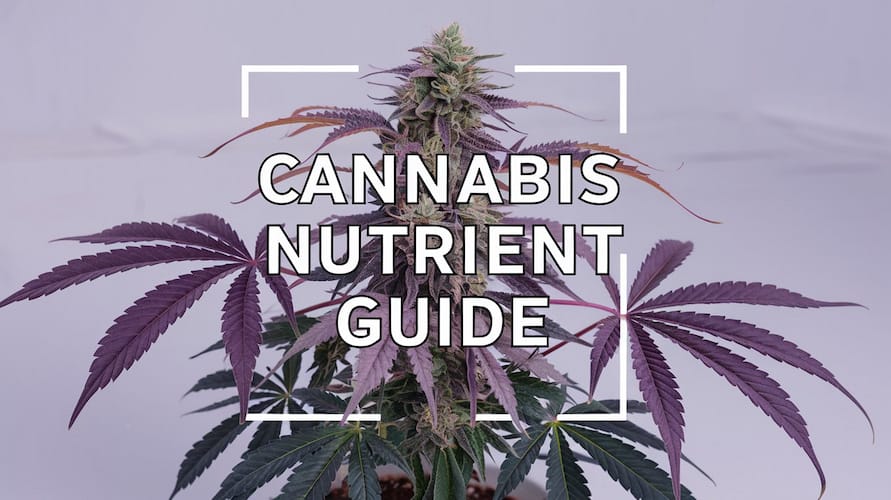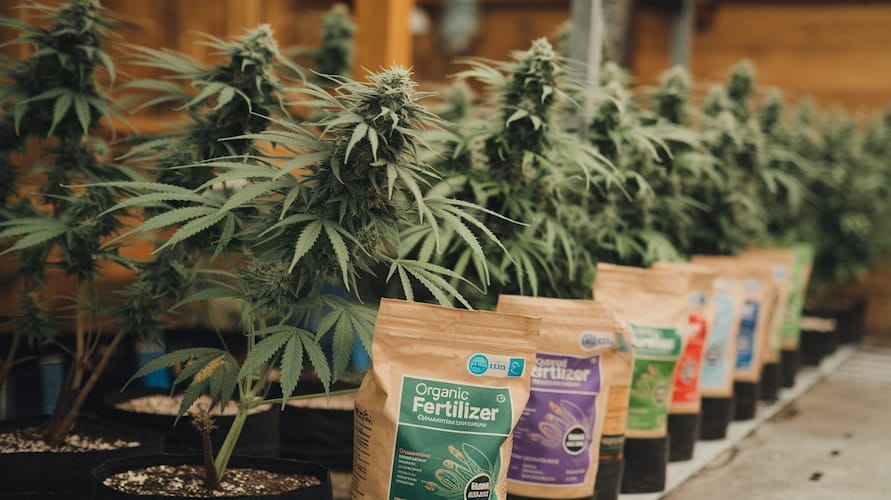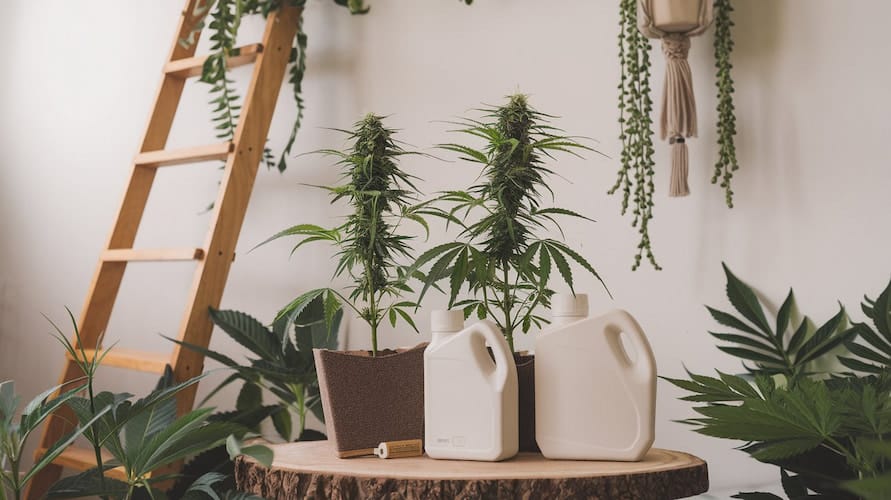Growing cannabis is an art and a science. From selecting the right strain to managing your grow environment, every step contributes to the success of your cultivation journey. However, one aspect often overlooked by beginners yet essential for every grower is understanding cannabis nutrients. These nutrients are the lifeblood of your plants, fueling their growth and enabling them to produce those luscious, resin-coated buds every grower dreams of.
In this guide, we’ll dive deep into everything you need to know about cannabis nutrients, including what they are, how they work, and how to use them effectively. Whether you’re a seasoned grower or a complete novice, this comprehensive guide will equip you with the knowledge to maximize your plant’s potential.
What Are Cannabis Nutrients?
Cannabis nutrients are the essential minerals and compounds that cannabis plants require to grow, develop, and thrive. These nutrients fall into three main categories:
1. Macronutrients
These are the primary building blocks for cannabis plants and are required in large amounts:
- Nitrogen (N): Vital for vegetative growth, nitrogen helps in leaf and stem development and is a key component of chlorophyll.
- Phosphorus (P): Essential for root development, flowering, and energy transfer within the plant.
- Potassium (K): Plays a crucial role in water regulation, nutrient uptake, and overall plant health.
2. Secondary Nutrients
While not as prominent as macronutrients, secondary nutrients are still crucial:
- Calcium (Ca): Strengthens cell walls and aids in root development.
- Magnesium (Mg): Central to chlorophyll production and photosynthesis.
- Sulfur (S): Supports protein synthesis and enzyme function.
3. Micronutrients
Required in trace amounts, these nutrients support various biochemical processes:
- Iron (Fe), Zinc (Zn), Manganese (Mn), Copper (Cu), Boron (B), Molybdenum (Mo), and Chlorine (Cl).
How Cannabis Plants Absorb Nutrients
Cannabis plants absorb nutrients through their roots, where they’re dissolved in water and transported throughout the plant via the vascular system. This process is influenced by factors such as pH levels, soil composition, and water quality. Ensuring the correct pH range (6.0-7.0 for soil and 5.5-6.5 for hydroponics) is critical for optimal nutrient uptake.
The Role of pH in Nutrient Uptake
Even if you provide all the essential nutrients, your plants can still suffer deficiencies if the pH isn’t within the optimal range. Here’s why:
- High pH: Can lock out micronutrients like iron, manganese, and zinc.
- Low pH: Can inhibit the absorption of calcium, magnesium, and phosphorus.
To avoid nutrient lockout, regularly test and adjust your pH levels using pH meters and buffers.
Types of Nutrients for Cannabis
There are several types of nutrient products available for cannabis growers. Each has its advantages and disadvantages, depending on your growing method and goals.
1. Organic Nutrients
Derived from natural sources such as compost, bone meal, and fish emulsion, organic nutrients improve soil health and promote sustainable growing practices.
Pros:
- Enhances soil microbiology.
- Environmentally friendly.
- Produces flavorful buds.
Cons:
- Slower nutrient release.
- Harder to control precise nutrient levels.
2. Synthetic Nutrients
These are man-made fertilizers formulated for immediate absorption by plants. They’re ideal for hydroponic systems and growers seeking precise control.
Pros:
- Fast-acting.
- Highly customizable.
- Consistent results.
Cons:
- Can harm soil microbiology over time.
- Higher risk of nutrient burn.
3. Pre-Mixed Nutrients vs. Custom Blends
- Pre-Mixed Nutrients: Convenient and easy to use, suitable for beginners.
- Custom Blends: Allow advanced growers to tailor nutrient mixes to specific strains and growth stages.
Feeding Schedules and Growth Stages
Understanding your plant’s nutritional needs during each stage of growth is crucial for a successful harvest. Here’s a breakdown:
1. Seedling Stage
- Nutrient Needs: Minimal nutrients, primarily water.
- Recommended Feeding: Use a diluted solution with high nitrogen and low phosphorus.
2. Vegetative Stage
- Nutrient Needs: High nitrogen, moderate phosphorus, and potassium.
- Recommended Feeding: Increase nutrient strength gradually as plants grow larger.
3. Flowering Stage
- Nutrient Needs: High phosphorus and potassium, lower nitrogen.
- Recommended Feeding: Transition to a bloom nutrient formula rich in phosphorus.
4. Flush Stage
- Nutrient Needs: None.
- Recommended Feeding: Flush plants with plain water to remove residual nutrients before harvest.
Common Nutrient Deficiencies and Toxicities
Recognizing the signs of nutrient imbalances is key to addressing issues early. Here’s how to identify and remedy common problems:
Nitrogen Deficiency
- Symptoms: Yellowing leaves starting at the bottom.
- Solution: Increase nitrogen supply.
Phosphorus Deficiency
- Symptoms: Purple or dark spots on leaves.
- Solution: Adjust pH and add phosphorus-rich fertilizers.
Potassium Deficiency
- Symptoms: Brown edges on leaves and weak stems.
- Solution: Add potassium supplements.
Nutrient Burn
- Symptoms: Leaf tips turn brown and curl.
- Solution: Flush plants with water and reduce nutrient strength.
Nutrient Delivery Methods
Cannabis nutrients can be delivered in various ways, each suited to different growing environments:
1. Soil Feeding
- Nutrients are mixed into the soil or applied as a liquid solution.
2. Foliar Feeding
- Nutrients are sprayed directly onto the leaves for rapid absorption.
3. Hydroponic Feeding
- Nutrients are dissolved in water and delivered directly to the roots.
Best Practices for Using Cannabis Nutrients
- Start Low and Go Slow: Begin with a low nutrient concentration and increase gradually.
- Monitor Plant Health: Regularly inspect your plants for signs of deficiencies or toxicities.
- Adjust for Environment: Factors like light intensity and temperature affect nutrient requirements.
- Flush Periodically: Flush your plants to prevent salt buildup in the growing medium.
- Keep a Grow Journal: Record feeding schedules and observations for future reference.
Top Nutrient Brands for Cannabis
The market is filled with nutrient products, but here are some trusted brands favored by growers:
- FoxFarm: Known for organic-based nutrients.
- General Hydroponics: Popular among hydroponic growers.
- Advanced Nutrients: Offers pH-perfect formulas.
- Botanicare: Focused on sustainability and quality.
- Canna: Tailored for professional growers.
DIY Cannabis Nutrient Recipes
For growers who prefer a hands-on approach, creating your own nutrient mix can be rewarding:
Vegetative Stage Recipe
- 1 cup of worm castings.
- 2 tablespoons of fish emulsion.
- 1 gallon of water.
Flowering Stage Recipe
- 1 cup of bat guano.
- 1 tablespoon of molasses.
- 1 gallon of water.
Mix ingredients thoroughly and apply to plants as needed.
Conclusion
Mastering cannabis nutrients is a cornerstone of successful cultivation. By understanding the essential nutrients, recognizing plant needs at each growth stage, and fine-tuning your feeding strategy, you can unlock the full potential of your cannabis plants. Whether you choose organic or synthetic nutrients, soil or hydroponics, the key is to observe, adapt, and enjoy the process.
Happy growing!





